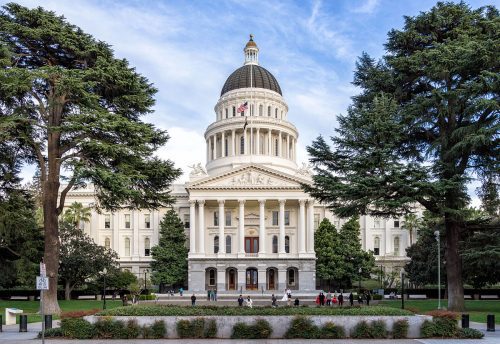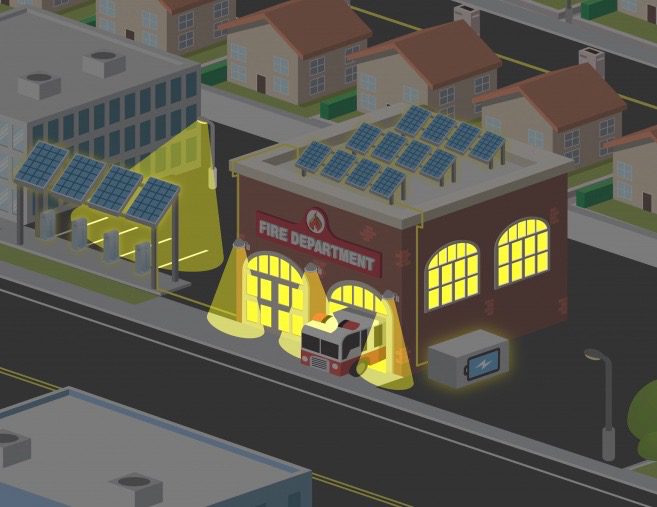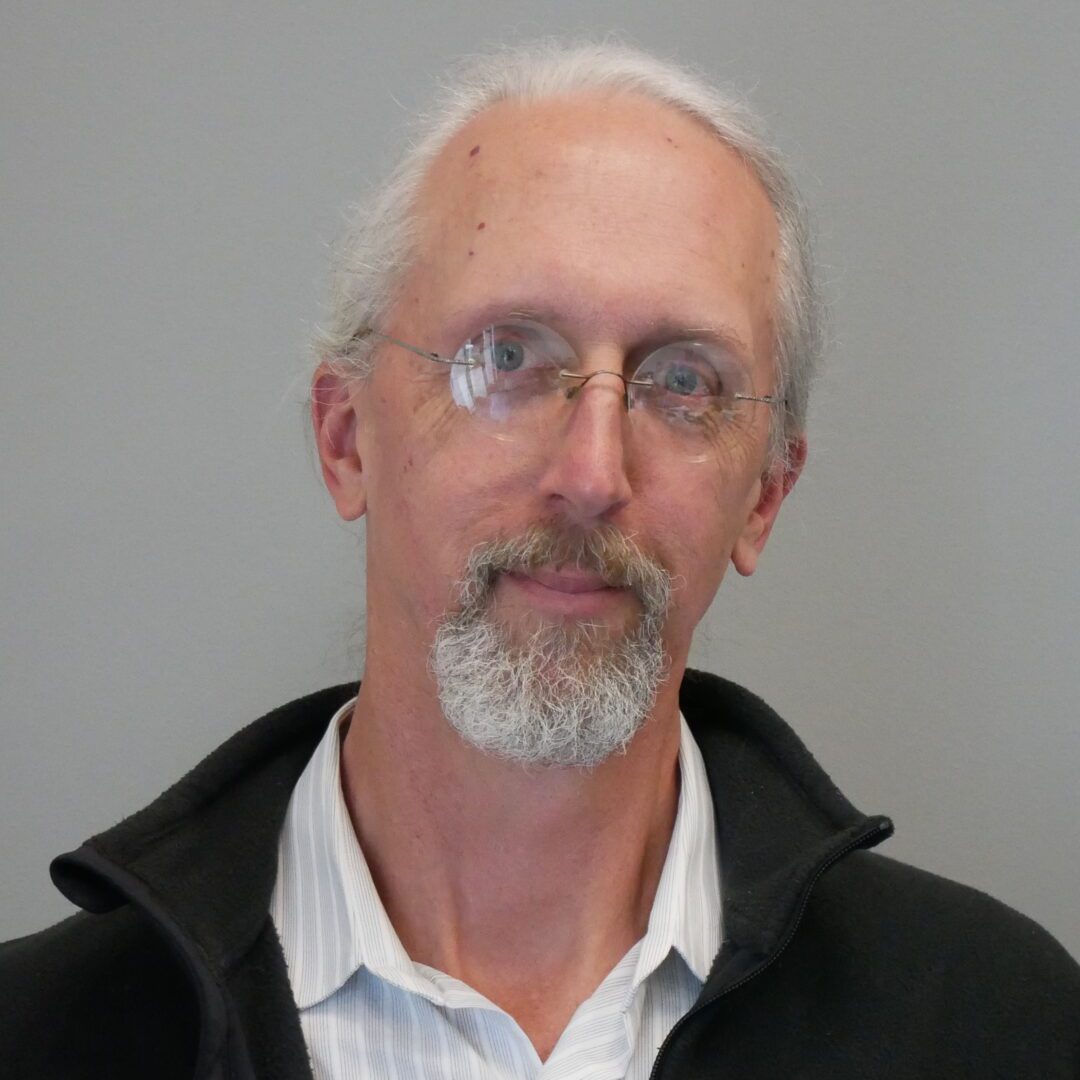
Clean Coalition policy wins in 2019 set the stage for Community Microgrid proliferation in the next decade
This year saw further progress on a wide range of issues in support of clean local energy.
In 2019, the Clean Coalition continued to lead on renewable energy and grid modernization policy – with over a dozen public filings in California regulatory proceedings.
Our work designing and staging Community Microgrids continues to inform our policy focus. The obstacles we encounter in these deployments help us identify the policy improvements needed to unleash the microgrid market.
It’s time for Community Microgrids
This year was a turning point for the Clean Coalition’s Community Microgrid Initiative, as another severe fire season in California, coupled with the increasing frequency and duration of Public Safety Power Shutoffs (PSPS), impacted communities across the state. The situation in California has led to a heightened interest in the significant economic, environmental, and resilience benefits that Community Microgrids deliver to communities.
In 2018, the California legislature passed SB 1339, with the aim of reducing barriers to resilience-focused microgrids. This year, the Clean Coalition filed comments to the California Public Utilities Commission (CPUC) on the rulemaking for SB 1339:
Our comments highlight the need for a Community Microgrid approach to establish energy resilience, and urge the CPUC to consider community-level interests as well as the integrated capabilities of distributed energy resources (DER).
In late November, the Clean Coalition also filed comments in support of Community Microgrids to the California Energy Commission (CEC), as part of the CEC’s Integrated Energy Policy Report Workshop. Our comments focus on establishing the policies and market mechanisms that will help proliferate Community Microgrids.

Proliferating Community Microgrids
Despite the current interest in microgrids, a number of hurdles remain to their widespread deployment. The Clean Coalition is working hard to help remove policy and market barriers for Community Microgrids and the DER that drive them.
Designing state-of-the-art Feed-In Tariffs
The Clean Coalition has long advocated for market-responsive Feed-in Tariffs (FITs) as the proven most cost-effective path to deploying DER. FITs are critical for meeting both community-level and statewide goals for clean, resilient, renewable energy, and for proliferating renewables-driven microgrids.
Our work this year extended to the City of San Diego. The Clean Coalition designed a state-of-the-art FIT with streamlined interconnection for San Diego that recommends the use of Market Responsive Pricing (MRP), which allows the price paid for both solar and storage to adjust based on market response, ensuring the community pays the optimal price for clean local energy. The FIT also includes a Dispatchability Adder to make renewable energy available via available storage capacity, regardless of whether the sun is shining or the wind is blowing, and to leverage time-of-delivery and other market values associated with flexible energy dispatch.

Fixing a market distortion that disadvantages clean local energy
After years of work on our Transmission Access Charges (TAC) Campaign, we saw the campaign gain traction this year as more organizations, activists, and regulators grasped the importance of TAC reform. The massive TAC market distortion in California unfairly disadvantages clean local energy, depressing the market for renewables-driven microgrids.
TAC reform got the attention this year of publications such as Microgrid Knowledge, pv magazine, and Utility Dive. In addition, the need for TAC reform was mentioned by numerous parties in comments filed on the CEC’s Integrated Energy Policy Report Workshop; public comments delivered at a hearing on PSPS held by the California State Senate’s Committee on Energy, Utilities and Communications; and public comments at a CPUC workshop on microgrid deployment.
The TAC Campaign continues to pursue the goal of passing legislation in California that will direct the CPUC to take up TAC reform.
Streamlining interconnection
Our long-running work on streamlining the interconnection process for wholesale distributed generation (WDG) – often commercial-scale solar and storage – continued in 2019. The Clean Coalition submitted a major draft report on interconnection to the CEC as part of our Valencia Gardens Energy Storage (VGES) Project, and made numerous proposals at the CPUC as a lead intervenor in the active interconnection proceeding. We proposed reforms related to construction timelines and third-party construction options, “cost of ownership” charges that currently double costs, electric vehicle to grid (V2G) interconnection, and IOU web portals. More than two dozen of our proposals were vetted and refined, and are currently pending adoption by the Commission in early 2020.

Distribution Resources Planning
Our Distribution Resources Planning (DRP) work reached a major milestone at the end of last year with the publication of the world-leading interconnection capacity analysis (ICA) maps by the state’s major IOUs. The new maps reflect successful intervention by the Clean Coalition and others in late 2018. This year, continuing reviews of the maps identified issues with the initial release and led to refinements that made steady improvements in the maps’ functionality and user friendliness. Ultimately, PG&E’s maps required wholesale reworking, which will be fully reflected in Q1 2020.
DER valuation
In a move forward for our work to ensure the full valuation of DER, the Integrated Distributed Energy Resources (IDER) proceeding took long-awaited action: the proceeding determined major changes to be made to the Avoided Cost Calculator (ACC) for 2020 and biennially in the future. These changes include starting to account for the value of DER in transmission and distribution planning with non-wires alternatives, flexibility, and resilience, as well as improved greenhouse gas accounting.
2019 was also the first full year of implementation of the distribution investment deferral framework (DIDF) and associated procurement of DER to avoid more costly conventional grid investments. While utilities are initially focused on gaining experience with a highly selective portfolio of projects, this marks a major milestone that has fundamentally changed the grid planning process in recognition of the capabilities and cost-effectiveness of DER.
Looking forward to the next decade
We look forward to continued policy successes and innovations in 2020 and throughout the coming decade. A major focus of our work in 2020 will be supporting Community Microgrids on the legislative and regulatory level. This important work is crucial for realizing the Clean Coalition’s vision for 2025, for at least 25% of all electricity generated from newly added generation capacity in the US to be from local renewable energy sources.

